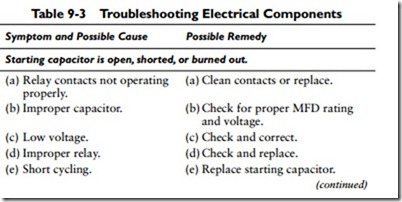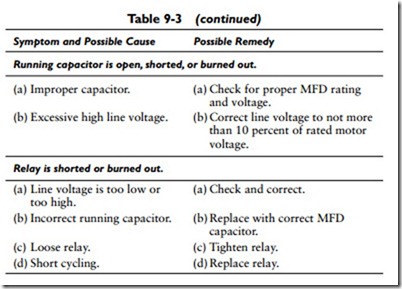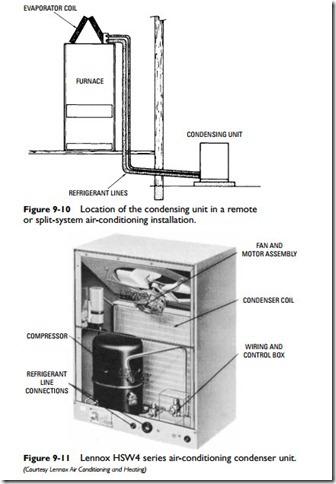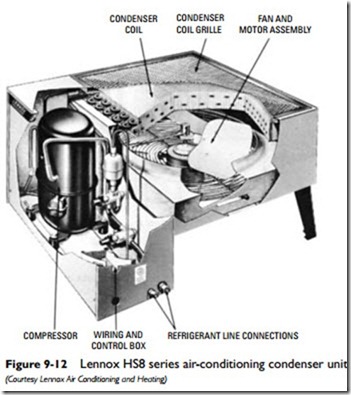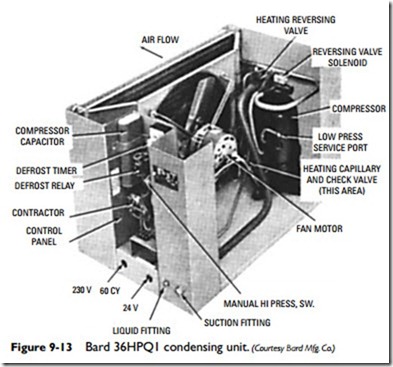Troubleshooting Electrical Components
Table 9-3 lists the most common problems associated with the operation of the electrical components in air-conditioning equipment. For each symptom, a possible cause and remedy are suggested.
Condenser
A condenser is a device that is used to liquefy gas by cooling. In operation, hot discharge gas (refrigerant vapor) from the compressor enters the condenser coil at the top and, as it is condensed, drains out of the condenser to a receiver located at a lower level.
The condenser coil is located along with the compressor and controlling devices in the condensing unit. In a remote or split- system air-conditioning installation, the condensing unit is located outdoors (see Figure 9-10). Condensers are available in a variety of designs, including plain tube, finned tube, and plate type, and as series-pass and parallel-pass units. A number of different condensers are illustrated in Figures 9-11, 9-12, 9-13, and 9-14.
Condensers may be classified with respect to the cooling method used into the following three types:
1. Air-cooled condensers
2. Water-cooled condensers
3. Combined air- and water-cooled condensers
An air-cooled condenser consists of a coil of ample surface across which air is blown by a fan or induced by natural draft (see Figure 9-15). This type of condenser is universally used in small- capacity refrigerating units.
A water-cooled condenser is similar to a steam surface condenser in that cooling is accomplished by water alone that circulates through tubes or coils enclosed in a shell. The refrigerant circulates through the annular space between the tubes or coils. Because of its construction, a water-cooled condenser is also sometimes called a double-pipe condenser (see Figure 9-16).
Maximum temperature differences can be obtained by connect- ing the condenser for counterflow. This type of arrangement usually gives the best operating results.
Shell-and-tube construction is recommended for a small con- densing unit. In medium-size units, shell-and-coil construction works very well (see Figures 9-17 and 9-18).
A combined air- and water-cooled condenser, more commonly known as an evaporative condenser, consists of a coil cooled by water sprayed from above and cold air entering from below (see Figure 9-19).
As water evaporates from the coil, it brings about a cooling effect, which condenses the refrigerant within the coil. The hot refrigerant gas within the coil is thus changed to the liquid state by the combined action of the sprayed water and the large volume of moving air supplied by the fan. The water that does not evaporate is recirculated by means of a pump.
Because an evaporative condenser is not wasteful of water, large compressor installations are possible in areas where water is scarce. Tests have shown that the amount of water required will not exceed gpm per ton of refrigeration. Evaporative condensers also eliminate wastewater disposal problems and provide the most economical means of cooling refrigerant gases.
Air-cooled condensers, like evaporators, should be kept free from dirt, lint, and other foreign materials because they tend to reduce the airflow around tubes and fins if they are allowed to accumulate.
